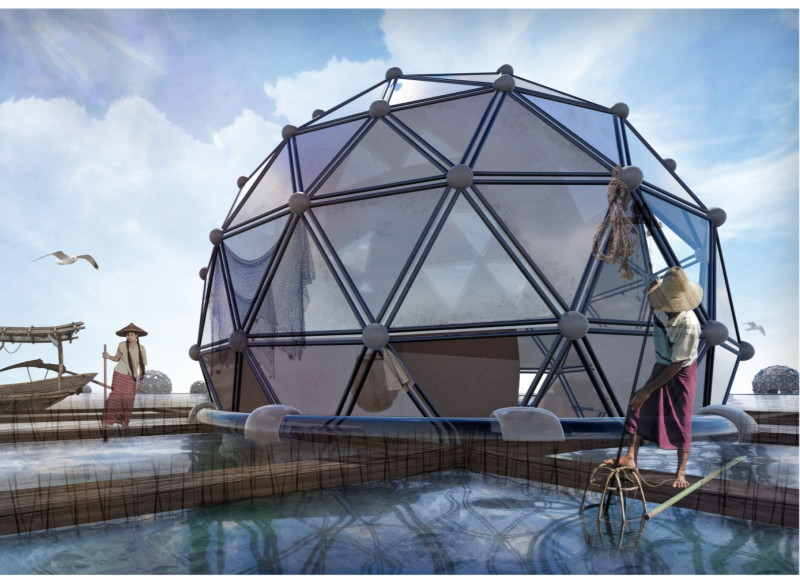5 key facts about this project
The design focuses on improving the living conditions of the Dan people in the coastal regions of southern China. These floating residents have depended on boats for shelter, facing numerous challenges from storms and a lack of modern conveniences. The project introduces a unique solution to these problems through a focus on safety, functionality, and sustainability.
Geometric Form
The building features a spherical shape, which enhances its stability and safety during harsh weather, particularly during typhoons. This design minimizes wind resistance and efficiently uses vertical space, which is crucial in a maritime environment. By prioritizing these characteristics, the structure provides a multifunctional home that supports various daily activities.
Spatial Configuration
Inside, the layout includes a kitchen and dining room, a storeroom, a bathroom, a living room, a workspace, and a bedroom. This arrangement promotes a sense of community while addressing the diverse needs of the residents. Each space of the home is purposefully designed to maximize utility within a limited area, reflecting a commitment to practical living solutions tailored to the community.
Material Composition
The outer frame of the building uses prefabricated metal grids, metal panels, and glass panels. These materials were selected for their strength, cost-effectiveness, and suitability for the local environment. This choice allows for quick assembly, making it easier to respond to the housing needs of the community.
Renewable Energy Integration
In addition to its structural features, the design includes systems for wave energy generation and sewage treatment. These technologies highlight the emphasis on sustainability and energy efficiency. By utilizing renewable energy sources, the building reduces its environmental footprint while improving the daily life of its residents.
The result is a living environment that addresses both immediate needs and long-term sustainability, where each home serves as a practical solution in a challenging setting.



















































